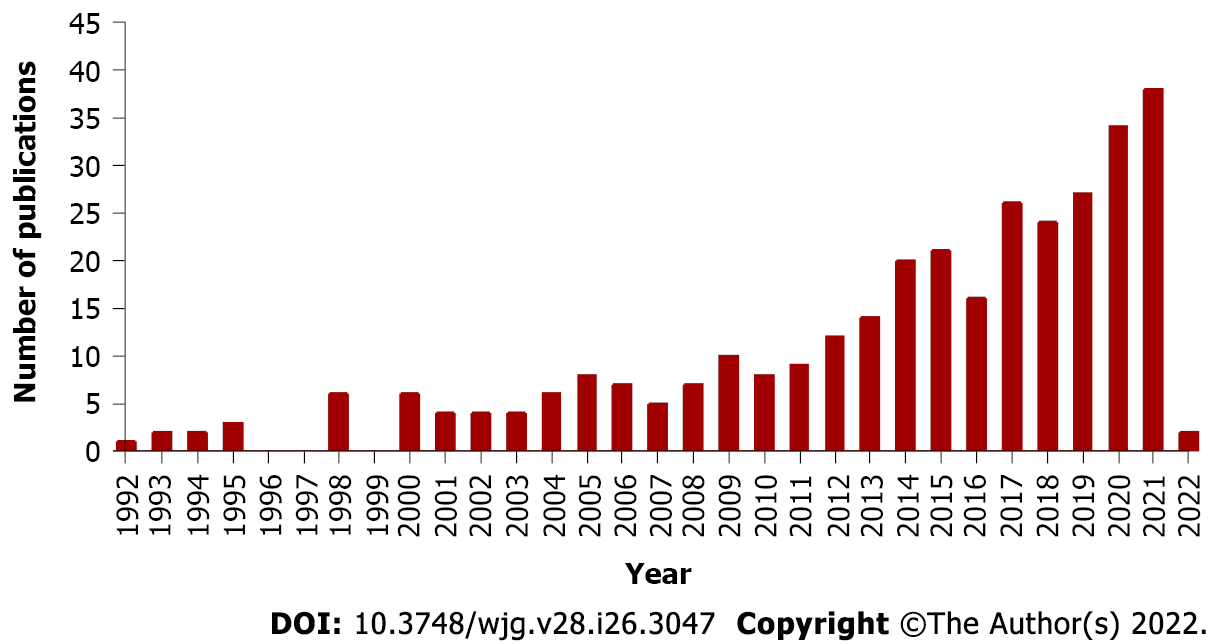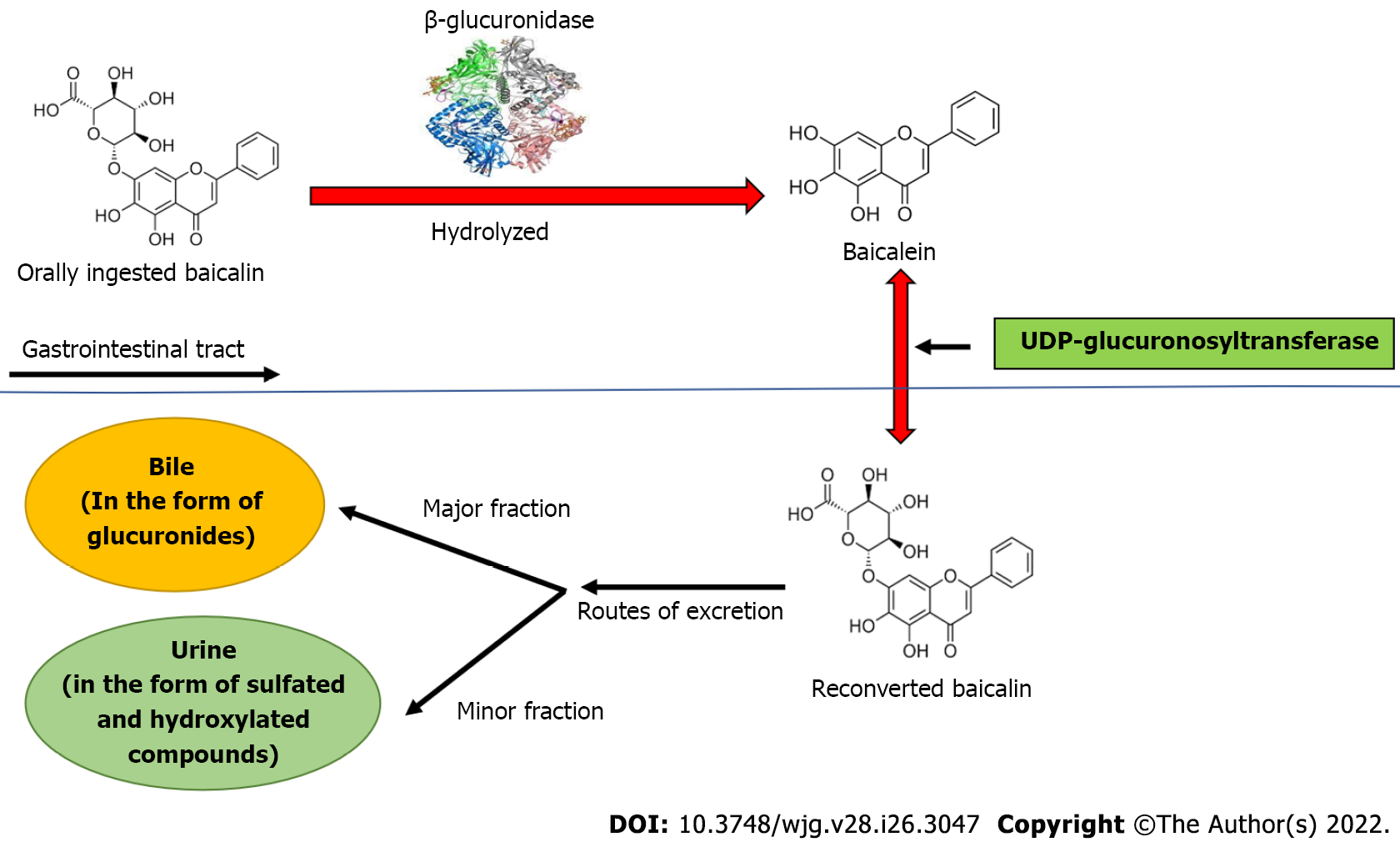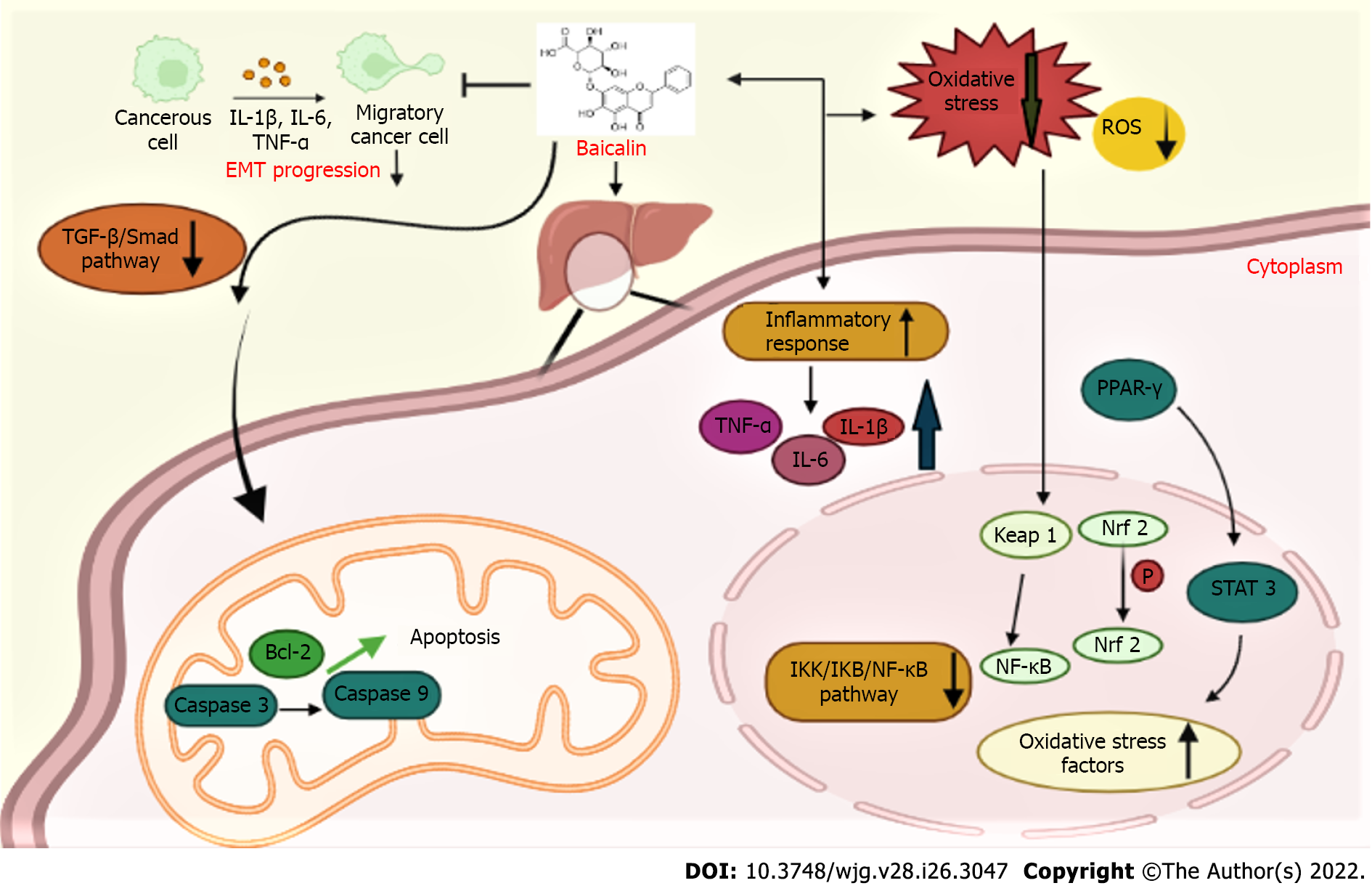Copyright
©The Author(s) 2022.
World J Gastroenterol. Jul 14, 2022; 28(26): 3047-3062
Published online Jul 14, 2022. doi: 10.3748/wjg.v28.i26.3047
Published online Jul 14, 2022. doi: 10.3748/wjg.v28.i26.3047
Figure 1 Increasing trend of publications on “hepatoprotective and anticancer properties of baicalin” indexed by PubMed.
Figure 2 Biotransformation of baicalin after oral ingestion.
Orally administered baicalin is hydrolyzed to baicalein by β-glucuronidase. Further, baicalein is reconverted to baicalin by uridine 5'-diphospho-glucuronosyltransferase in intestine. The major part of baicalin excretion takes place via the biliary route in the form of glucuronides, and a small fraction of baicalin is excreted via urine in the form of sulfated and hydroxylated compounds. UDP: Uridine 5'-diphospho.
Figure 3 Mechanism of baicalin action against hepatobiliary diseases.
Baicalin downregulated peroxisome proliferator-activated receptor-α and activated the nuclear respiratory factor-2 antioxidant pathway to reduce oxidative stress in the hepatocytes. Baicalin suppressed epithelial-mesenchymal transition progression by downregulating the transforming growth factor-β/Smad pathway, inhibited the inhibitory κB (IKB) kinase/IKB/nuclear factor-kappa B pathway, reduced the elevated levels of inflammatory factors such as tumor necrosis factor-α, interleukin-6 (IL-6) and IL-1β, and attenuated the apoptotic proteins caspase-3, caspase-9, B-cell lymphoma 2, which led to the alleviation of liver diseases. ROS: Reactive oxygen species; STAT: Signal transducer and activator of transcription; PPAR-γ: Peroxisome proliferator-activated receptor-γ; IL: Interleukin; Nrf2: Nuclear respiratory factor-2; TGF-β: Transforming growth factor-β; NF-κB: Nuclear factor-kappa B; TNF-α: Tumor necrosis factor-alpha; Bcl-2: B-cell lymphoma 2; EMT: Epithelial-mesenchymal transition; IKK: Inhibitory κB kinase; IKB: Inhibitory κB.
- Citation: Ganguly R, Gupta A, Pandey AK. Role of baicalin as a potential therapeutic agent in hepatobiliary and gastrointestinal disorders: A review. World J Gastroenterol 2022; 28(26): 3047-3062
- URL: https://www.wjgnet.com/1007-9327/full/v28/i26/3047.htm
- DOI: https://dx.doi.org/10.3748/wjg.v28.i26.3047











